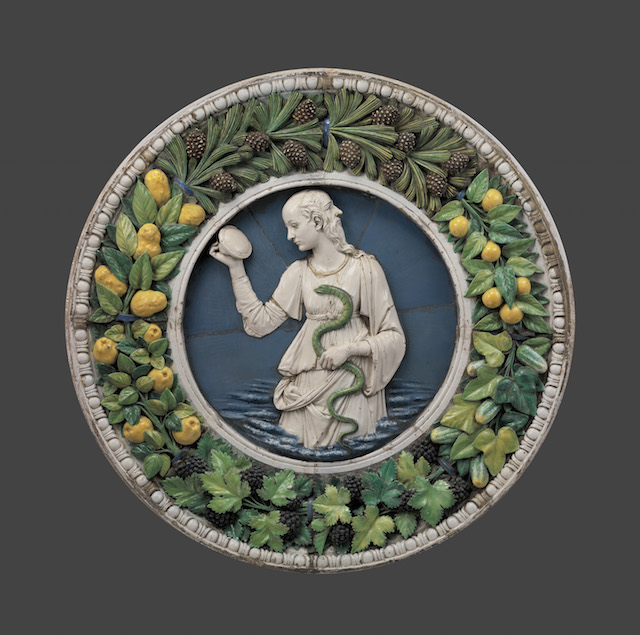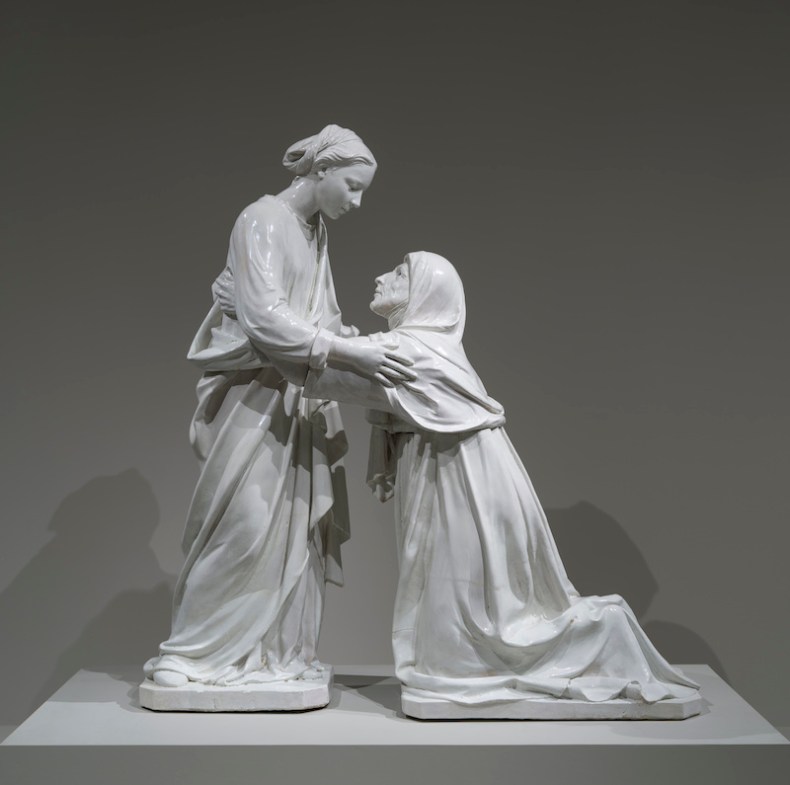Sculpting with Colour in Renaissance Florence
Luca della Robbia (1399/1400-1482), a master sculptor in marble and bronze, invented a glazing technique for terracotta sculpture that positioned him as one of the most innovative artists of the 15th century. Today, the sculptures created by Luca and his family workshop retain their brilliant opaque whites, deep cerulean blues, and botanical greens, purples and yellows over modelling that makes them powerful and engaging examples of Italian Renaissance art. Technical analysis and conservation conducted at the Museum of Fine Arts, Boston, the Brooklyn Museum, the National Gallery of Art, and the Metropolitan Museum of Art will provide new insight into how these groundbreaking works were made. Find out more about the ‘Della Robbia’ exhibition from the National Gallery of Art’s website.

Prudence (before conservation) (ca. 1475), Andrea della Robbia. Courtesy Museum of Fine Arts, Boston

Bust of a Young Boy (c. 1475), Andrea della Robbia. Courtesy of the Ministero dei beni e delle attività culturali e del turismo and Museum of Fine Arts, Boston

Resurrection of Christ (c. 1520–24), Giovanni della Robbia. Brooklyn Museum, New York

The Visitation (c. 1445), Luca della Robbia. © Museum of Fine Arts, Boston











![Masterpiece [Re]discovery 2022. Photo: Ben Fisher Photography, courtesy of Masterpiece London](http://www.apollo-magazine.com/wp-content/uploads/2022/07/MPL2022_4263.jpg)
Suzanne Valadon’s shifting gaze